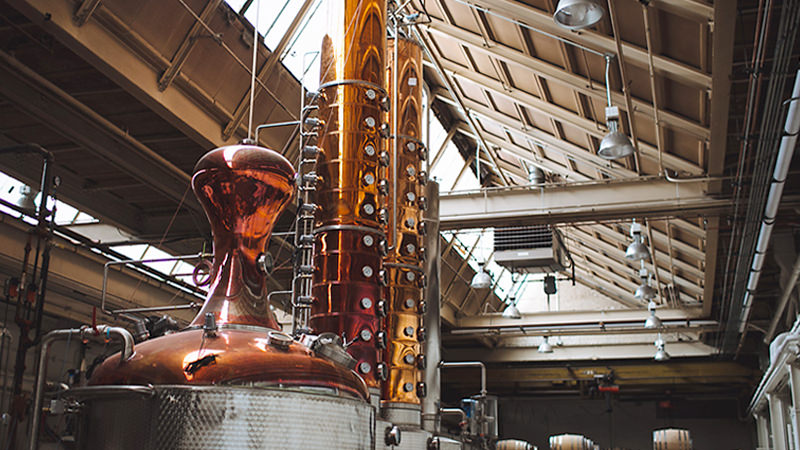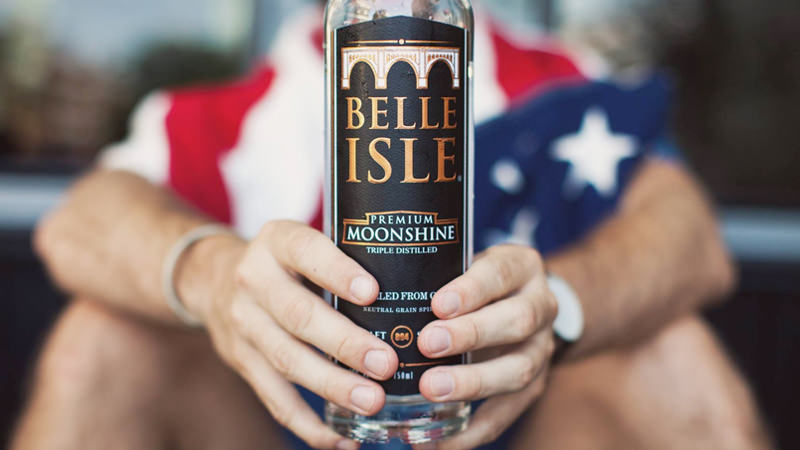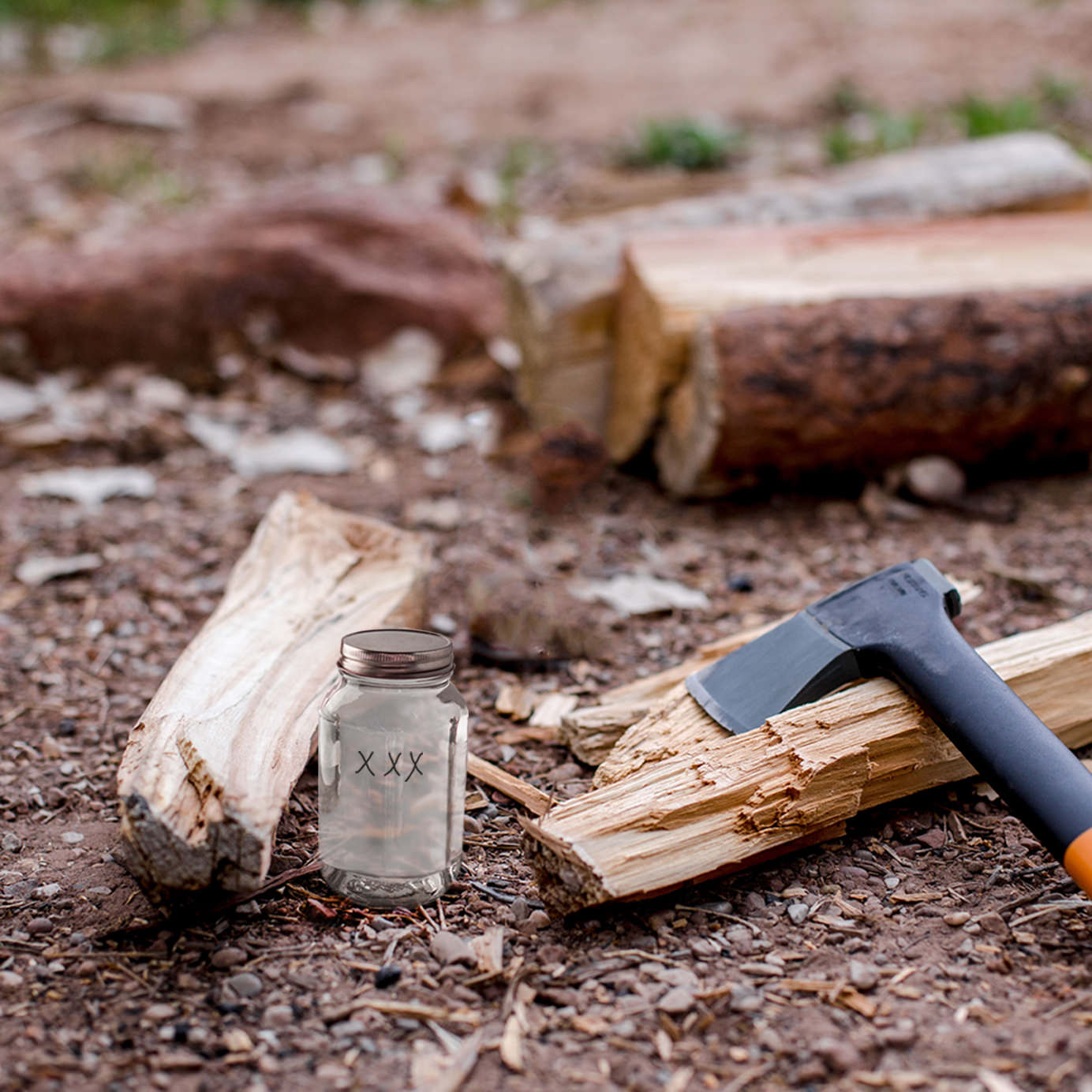“Every Spring, a fearless group of men and women venture deep into the woods of Appalachia, defying the law, rivals and nature itself to keep the centuries-old tradition of craft whiskey alive,” reads the synopsis for “Moonshiners,” a hit Discovery Channel reality show now in its seventh season. “As the black market for white whiskey heats up, desperate shiners put new, dangerous still designs into service, while legendary old-timers come out of retirement to head back into the hills for one more run.”
The series description is meant to conjure the image of hardscrabble country folk, trudging up hollers in Kentucky or Tennessee, peering into bubbling stills. Their hands are sandpaper-rough and caked with dirt. The stub of a hand-rolled cigarette pokes out from an unkempt beard. It’s romantic in its own mysterious, illicit way, and, most importantly, it sells.
There’s only one problem. What they’re doing is not altogether illegal.
“I honestly haven’t watched it a bunch, but I think anything that brings light to what we’re doing is good for us,” Gregg Brooks, director of production and R&D at Belle Isle Craft Spirits, a moonshine distillery in Richmond, Virginia, says. “Those shows are meant to be entertaining. For them, it’s great that it helps to sell their brand but ultimately, it’s just great entertainment.”
The brand Brooks is referring to is Climax Moonshine, an above-board, Virginia-based distillery helmed by “Moonshiners” star Tim Smith, who, according to his website, “doesn’t like being told what he can or can’t do.” He apparently complies with state and national alcohol laws, though, because fans of the show can find Smith’s unaged whiskey, distilled from a mix of corn, rye, and barley malt and weighing in at 90 proof (or 45 percent alcohol by volume), on liquor store shelves across the country. The only real difference between what Smith is making and the $60 bourbon sitting next to it? An oak barrel.
“It’s basically just unaged whiskey, white whiskey,” Brittney Roberson, manager and whiskey advisor at Jack Rose Dining Saloon, says. “A lot of people have the misconception that whiskey comes off of the still brown, but like any other distilled spirit, it comes off the still clear, and aging it in oak barrel is what gives it 100 percent of its color and a lot of its taste.”
“Moonshine, historically, has referred to an illegal spirit and I definitely think people still associate this practice with what’s being called moonshine now: unaged whiskey from reputable, taxed distillers using the term to harken to the old days, so to speak, to reference a tradition,” Roberson explains.
Chicago’s lauded Koval Distillery has released four different single-grain white whiskeys since the company launched in 2008. All are unaged but tempered for smoothness. “People are still hesitant to try it,” Koval’s Jake Hukee says. “You have to explain, like, ‘It’s not what you think of when you think of moonshine or white lightning, it’s not any hair of the dog kind of stuff. This is a proofed whiskey, it’s been toned down, it’s not coming off super hot, and it’s not made in the woods.’”

Americans have been whipping up their own whiskey since the 17th century, when liquor-starved European colonists tried subbing in locally abundant corn for the barley they were used to distilling with at home. The result was a sweeter distillate that was flavorful, potent, and clear as water.
“As much as it comes from European roots, it’s a very American narrative,” Tony Correale, bar manager at Longman & Eagle, says. “The settlers weren’t distilling malted barley here because that wasn’t what was growing — it was corn. It was what they had on hand.”
Today the category is complicated by consumer perceptions of this heritage product, and by companies’ (sometimes intentionally) vague labeling. Distillers market unaged, corn-based liquors under an array of different monikers, including white whiskey, white dog, white lightning, and moonshine. And while it is still illegal for private citizens to distill spirits for retail purposes, antiquated state and national alcohol laws also inhibit how legitimate distillers can produce and sell moonshine.
“We technically do age [our white whiskey] for 24 hours to meet all the standards of being considered whiskey in the state of Illinois,” Koval’s Hukee says. “We don’t get any effect from the barrel for tasting or color, obviously.” The barreling law is a remnant of an old barrel and bond act designed to prevent home distillers from selling untaxed booze. “So if you want to distill your whiskey, you have to buy a barrel, which makes it expensive so only real distillers will be able to do it,” Hukee says.
Despite these challenges, the economics of moonshine make it attractive to smaller operations like Koval. Aged whiskey takes time to mature in the barrel, leaving young companies with nothing to sell for years. Using that same equipment to bottle unaged spirits like gin, vodka, and white whiskey generates cash flow and brand recognition while distillers age the beloved brown stuff.
For a big player like Maker’s Mark, however, the decision to bottle its signature white whiskey had little to do with money. “For us, it’s really about… our patrons, people who love Maker’s Mark, or just bourbon fans in general,” Maker’s Mark master distiller Greg Davis says. Maker’s Mark White offers diehard enthusiasts the chance to “get a peek into the beginning or the birth of bourbon.”
“It’s not really about trying to say, ‘Hey, look how fantastic this is and how great it is,'” Davis adds. “No, we’re trying to give you a piece of how our flavors develop over our process and through maturation.”
Whiskey bars often take a similar approach, using unaged inventory to show patrons just how barrel-aged whiskey comes to be. “When we first opened, we carried a lot more white whiskies. We had a flight of all the different unaged Kovals — a white flight, if you will. Well, we didn’t call it that, but we should have,” Correale says. ”We still have a flight with Buffalo Trace White Dog, Benchmark, which is a three- to four-year-old version of the same mash bill, and then Eagle Rare, which is a 10-year version. It just gives people an idea of how the spirit changes in the barrel over time and we go through a good amount of that.”

In terms of bad-boy allure, moonshine could be considered comparable to absinthe. Yet unlike the Bohemian Green Fairy’s highbrow allure, moonshine’s gritty, backwoods, down-home connotations can be a liability for certain whiskey aficionados. “People still definitely shit all over moonshine,” Correale admits. “It’s a harsher flavor, it’s not thought of as something you can sip easily and comfortably. It’s for an adventurous drinker in a way, and I think there’s still a lot of stigma there.”
That’s why some moonshine advocates are diverging from the countrified Mason jar look and positioning it as a substitute for other clear spirits, or as an unusual addition to craft cocktails.
“When I first started, we had a cocktail with Dickel White, strawberries, lemon and mint,” remembers Jack Rose’s Roberson. “That was one of our best-selling cocktails and people were not at all averse to the idea that it was a white whiskey.” Roberson contends that “if you want that kind of nutty, sweet corn flavor, than maybe an unaged corn whiskey is a better route than a bourbon.”
Some distillers would rather compete with other white spirits than bourbon or aged whiskey. “From day one, we’ve said we wanted to disrupt the vodka market,” Belle Isle’s Brooks says. “If you drink vodka, take a chance on what we do here, because there’s a very good possibility you’re going to like what we do better than your current vodka of choice.”
Belle Isle’s moonshine comes in a tall, narrow bottle more reminiscent of Grey Goose than anything you’d expect to find on a back forty. Packaging has proven important. “That was key very early on: Get on these back bars, get on cocktail lists, get the bartenders behind us,” Brooks says. “A lot of us [at Belle Isle] have bar backgrounds, and you never want something awkwardly shaped and hard to grasp when you’re just trying to pour two ounces quickly but efficiently.”
Whether or not moonshine will be able to finagle its way into the hearts of the boozy elite, with their 40-year-old Scotches, limited-release bourbons, and impossible-to-pronounce amari, is still up for debate. The growth of the category is, for now, uncertain. But one thing’s for sure: Call it what you will, this feisty, raw, and unabashedly brazen firewater is an American original.
“We always get back to it being America’s original clear spirit,” Brooks says. “It’s not vodka, it’s not gin, it’s not any other type of whiskey. It just is what it is.”
